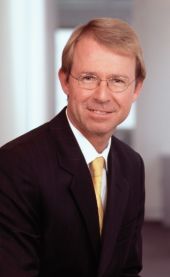-
Get the latest news! Subscribe to the ifa bulletin


Since the height of the eurozone crisis in 2011, share markets and most growth assets have seen a solid rebound, but can the good luck continue?
IN THE wake of the worst of the eurozone crisis, European measures to deal with it reached a critical mass, the US Fed announced another round of monetary stimulus, there was a sea change in Japan with Abenomics ushering in far more aggressive reflationary policies, and in Australia the Reserve Bank continued to cut interest rates.
Since then, share markets and most growth assets have rebounded and the global economy continued to grow.
But can this continue? Certainly, the last month or so has seen a few more worries, with concerns about several emerging countries; intervention in Syria; the Fed’s decision about slowing down the pace of its monetary stimulus program; negotiations around the US government’s debt ceiling; uncertainty about who will replace Bernanke at the Fed; political instability around several peripheral governments in Europe; and, of course, the election in Australia.
Our assessment though is that while these factors may create volatility, they will ultimately be resolved in a way that does not derail the global economic recovery.
However, it’s also worth noting that the September/October period is often weak for shares, so any volatility flowing from these factors could well create a buying opportunity ahead of normal seasonal strength into year end.
More fundamentally, our assessment remains that the cyclical bull market in shares has further to go. This, along with reasonable returns from property, should underpin further gains in diversified investment portfolios over the year ahead despite modest fixed income and cash returns.
With bond yields and cash rates extremely low (at less than 4 per cent), equity markets and related growth assets will be the key drivers of returns for diversified portfolios.
SHARES NOT DIRT CHEAP, BUT...
To be sure, shares are no longer so cheap. However, they are not expensive either. Cyclical bull markets in shares typically go through three phases with the first phase being driven by the unwinding of cheap valuations and low interest rates; the second phase driven by stronger profits; and the third phase being a blow off as investor confidence becomes excessive pushing shares into expensive territory.
Our assessment is that we are entering the second phase of the cycle and as such, the cyclical/profit backdrop is becoming more important.
ECONOMIC CYCLE ON THE MEND
The years 2010, 2011 and 2012 were each characterised by mid-year growth scares initially triggered in Europe but which then spread to the United States and elsewhere.
However, this has not happened this year. In fact, recent volatility has owed more to talk of slowing or tapering the pace of monetary stimulus in the United States in response to signs of more resilient growth. By region:
Reflecting this, the global manufacturing conditions [performance index] is trending up, in contrast to a year ago when the trend was down. This suggests that global growth over the year ahead is likely to pick up a notch, which should in turn underpin a modest improvement in profit growth.
In Australia, growth has slowed to around 2.5 per cent and may slow further in the short term. While risks are on the downside, our assessment remains that the combination of very low interest rates and a lower Australian dollar will drive a modest pick-up in growth into next year, led by housing construction.
GLOBAL MONETARY CONDITIONS TO REMAIN EASY
The last few months have reflected considerable concern that the Fed is about to prematurely end its monetary stimulus program and interest rates will start to rise sooner than expected. However, this is unlikely.
The bottom line is that the monetary backdrop is set to remain supportive for investment markets. With plenty of spare capacity and inflation remaining low globally, it’s hard to see monetary tightening any time soon.
INVESTOR SENTIMENT FAR FROM EUPHORIA
Investor confidence about shares is a long way from the sort of excessive optimism associated with market tops. While US equity mutual funds have seen inflows this year, there is a long way to go to reverse the US$556 billion in outflows seen over the previous five years.
Similarly, bond funds have a long way to go to reverse the US$1.1 trillion in inflows seen over the last five years. In other words, as the “irrational exuberance for safety” seen since the GFC reverses, there is still a lot of money that can flow from bond funds into equity funds, supporting shares in the process.
Similarly, in Australia the amount of cash sitting in the superannuation system is still double average levels seen prior to the GFC. In other words there is still a lot of money that can come into equity markets as confidence improves.
EXPECT THE USUAL BUMPS
Inevitably, there will be bumps along the way. However, while equity returns are likely to slow, the combination of still reasonable valuations, gradually improving economic conditions, easy monetary conditions and a lack of excessive optimism suggest further solid gains ahead.
Low bank deposit rates are also likely to be a supportive factor for returns from growth assets, particularly those offering decent yields, as investors are likely to continue to seek out alternatives to term deposits. This should also continue to support returns from property-related assets, although again at a slower pace than seen over the last year.
About Shane Oliver
 Shane Oliver is the chief economist and head of investment strategy at AMP Capital.
Shane Oliver is the chief economist and head of investment strategy at AMP Capital.
Never miss the stories that impact the industry.